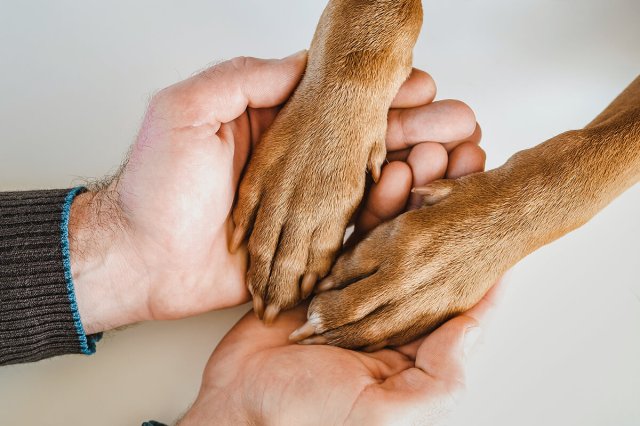
Puppy Eyes
No one can resist the heart-melting “puppy dog eyes,” and dogs seem to know it. Over time, they have developed special muscles around their eyes that allow them to make this adorably innocent expression. By raising the eyebrows upward and inward, dogs make their eyes appear larger and more infant-like, triggering a nurturing response in humans — a definite bonding advantage. Studies show that this large muscle (known as the levator anguli oculi medialis) runs along the outer edge of a dog’s eye, helping to expose the whites of the eyes and making the animal look more “human.” Although it’s a major part of how domestic dogs communicate, the muscle is notably absent in wolves.

Understanding Humans
One of the most remarkable abilities of dogs is their deep understanding of human emotions and intentions. Dogs’ brains have evolved to interpret subtle cues that humans give, including gestures such as pointing, tone of voice, and even facial expressions. It’s a demonstration of empathy some humans even struggle with.
When a person is sad, excited, or anxious, pets seem to adjust their behavior accordingly. Of course, dogs have also evolved to understand certain sounds as they relate to actions, such as “walk” or “sit,” but recent studies suggest they may understand our language more than we know. When researchers showed dogs words and objects that either matched or didn’t match, they noticed a brain response that suggested the pups were expecting the correct object based on the word they heard — a response very similar to that of the human brain.

Barking
Barking is believed to have developed specifically as a way for dogs to communicate with humans. While wolves can bark, they typically tend to howl instead. Over time, however, our clever canines refined an almost conversational range of barks to signify different things, from excitement to danger to simply seeking attention.
Research has shown dogs’ understanding of our communication signals to be symbiotic, too: In one study, several people with differing levels of exposure to or experience with dogs listened to a series of different dog barks. They were often able to accurately identify the emotions — such as fear, happiness, or aggression — behind the noise based on factors including the pitch and the timing between barks. Of course, barking is a much more rudimentary communication system than human language, but it’s an impressive evolutionary feat nonetheless.
More Interesting Reads

Eye Contact
It’s not just those irresistible eyebrows that draw us into a sweet pup’s face — dogs also love to gaze right into our eyes. This soulful eye contact between dogs and humans has been shown to release oxytocin in both species. The mutual gaze and the “love hormone” it releases is not unlike the bonding behavior seen between mothers and their newborn infants. Other animals often interpret and execute direct eye contact as a threatening action, but dogs have earned our devotion by evolving to seek and maintain eye contact. This wordless communication can also be effective during training, helping dogs pick up on human commands and emotions — something at which they’re already terrifically adept.

Playing With Humans
Playfulness is another key trait dogs use to curry favor with humans. Unlike many other animals, dogs retain a youthful playfulness throughout their lives. This phenomenon of maintaining juvenile features into adulthood, known as neoteny, likely developed throughout several centuries of breeding and domestication — playful dogs had a higher chance of bonding with humans and, as a result, receiving care and sustenance.
Running your dog tired isn’t just good for their physical well-being and the quality of their subsequent rest; it also reinforces social bonds, provides mental stimulation, and helps dogs practice cooperative behaviors. But of course, it’s not all just for the pup. Play releases endorphins in both dogs and humans, creating a positive feedback loop that helps reinforce the special bond between humans and our furry friends.












